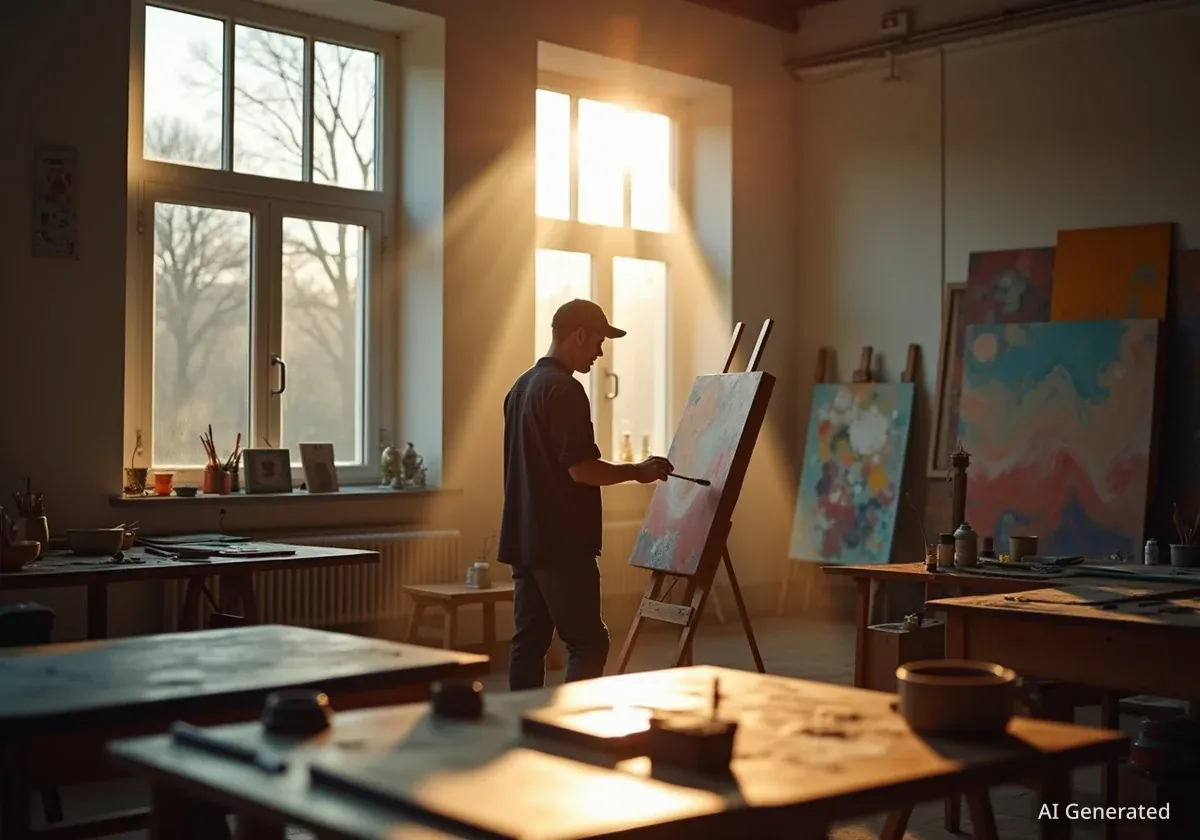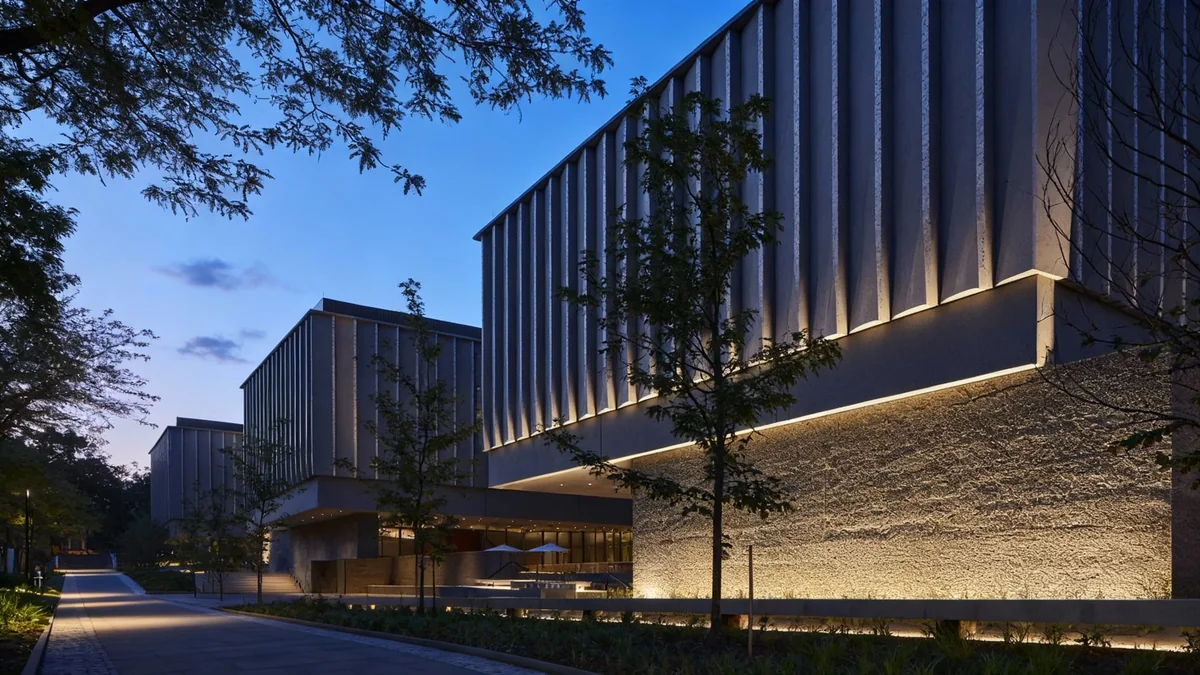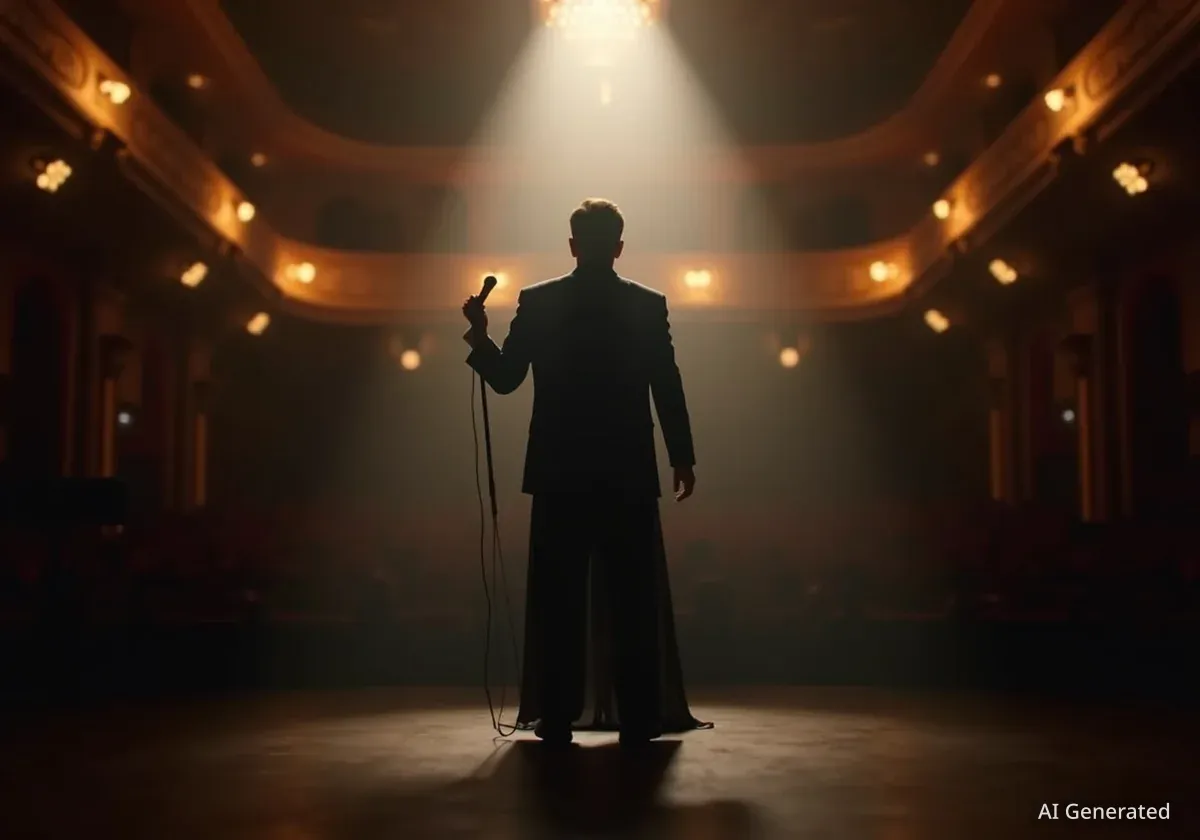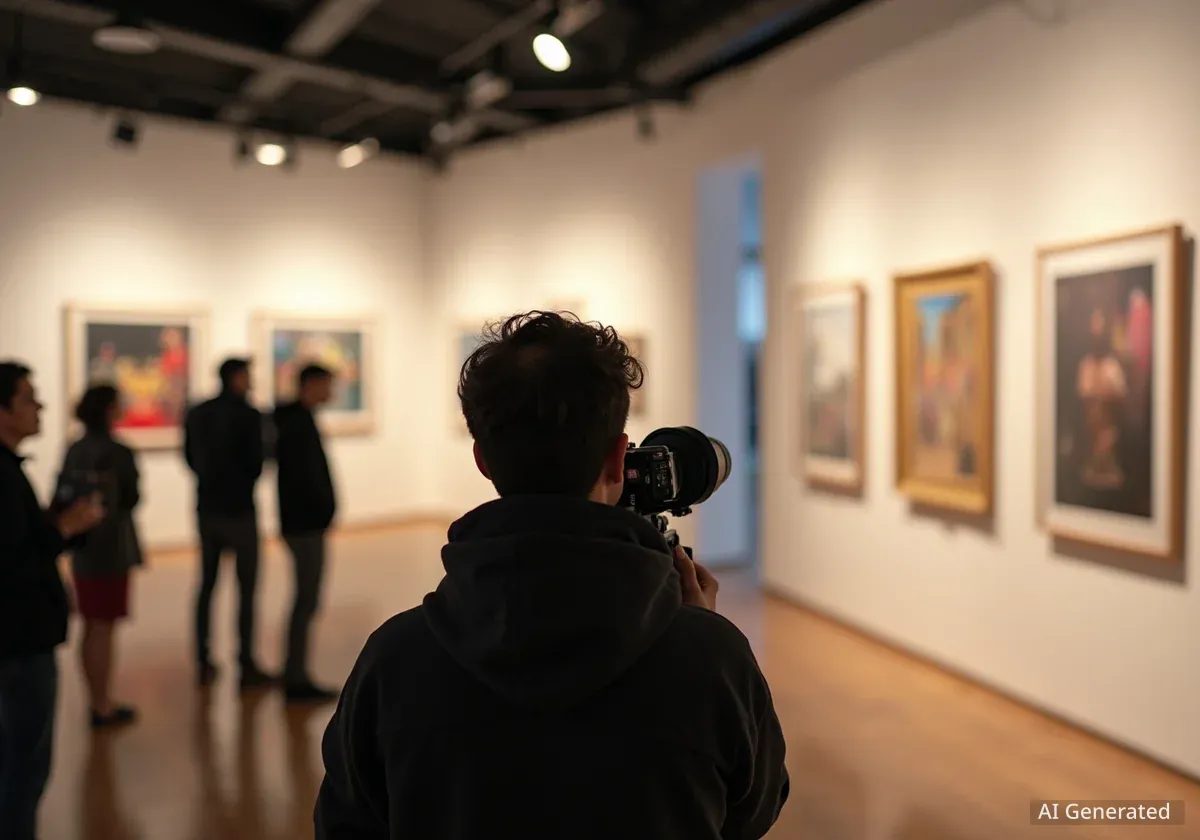A unique collaboration in Greater Manchester is exploring the role of creative arts in supporting individuals recovering from substance use. The project, a partnership between Manchester's Castlefield Gallery and the Anew therapeutic community, marks what is believed to be the first artist residency of its kind in a UK treatment center.
Organized by Portraits of Recovery, a national arts organization, the six-month initiative aimed to provide a new outlet for expression, build community, and increase visibility for a frequently marginalized group. The resulting artworks are now featured in a public exhibition.
Key Takeaways
- A six-month artist residency, a UK first, was established at the Anew treatment and recovery center in Greater Manchester.
- Designer Joe Hartley collaborated with approximately 60 individuals at different stages of their recovery journey.
- The project, led by arts organization Portraits of Recovery, uses creative activities to reduce stigma and foster community.
- Artworks created during the residency, including ceramics and photography, are now on display at Manchester's Castlefield Gallery until October 19.
A Pioneering Partnership for Healing
In an innovative effort to integrate culture into therapeutic processes, a notable artist residency has taken place in Hyde, Greater Manchester. The program brought together the contemporary art world and a community focused on recovery from substance dependency.
The collaboration involved Castlefield Gallery, a prominent Manchester art space, and Anew, a not-for-profit residential therapeutic community. This partnership provided a structured environment for residents to engage with creative practices as part of their recovery.
Driving the initiative was Portraits of Recovery, a UK-based arts organization dedicated to working with people affected by substance use. Their central mission is to challenge public perception and support recovery through cultural engagement.
The Philosophy of 'Recoverism'
Dominic Pillai, the curator of social engagement at Portraits of Recovery, explained the organization's guiding principle, which they call 'recoverism'. This approach views recovery not just as a clinical process but as a cultural and activist movement.
"Our ethos is about looking at arts and culture as part of people’s recovery journey, and about making social change through arts and culture," Pillai stated.
He emphasized that the project's core goal is to give a platform to marginalized voices. "The recovery community is a marginalised community – there’s a lot of stigma around it – so Portraits of Recovery is about visibility," he added. The work aims to break down societal barriers and promote greater inclusion.
The Artist in Residence Experience
Designer Joe Hartley was selected as the artist for this groundbreaking residency. Over a period of six months, Hartley visited the Anew facility twice a week, working directly with the community members.
Due to the nature of a therapeutic community, where residents are at various points in their treatment, Hartley collaborated with a changing group of around 60 individuals. This dynamic environment required a flexible approach to art-making, spanning disciplines from photography to ceramics.
Building Community Through Shared Creation
One of the key challenges in recovery is overcoming feelings of isolation. The project was designed specifically to foster connection and a sense of belonging. Art became the medium through which individuals could collaborate and build supportive relationships.
A particularly effective exercise involved making teapots, an object Pillai noted is significant in the recovery process as a symbol of community and conversation. The activity was structured to encourage teamwork over individual ownership.
"To challenge people from getting too possessive or taking ownership, one person would make the body, pass it on, the next would make a handle, the next a spout," Pillai explained. "All the pots were made by everyone, not by one person." This method ensured that the final products were a testament to their collective effort.
A Personal Connection for the Artist
The residency held profound personal significance for Joe Hartley. The artist lost his younger brother to substance use four years prior to the project. This experience provided him with a unique and empathetic perspective on the challenges faced by the Anew residents.
Reflecting on his time at the center, Hartley described it as a deeply moving journey. "It’s been a highly emotional but positive experience – to see that struggles with substance use don’t always end the same way," he said. The project offered a hopeful counter-narrative to his own family's tragedy.
The Impact of Art on Recovery
Advocates for the program stress that creative expression offers more than just a diversion. It can be a vital tool for rebuilding identity, purpose, and social bonds, which are often damaged by addiction.
Statistics on Substance Use in the UK
According to the Office for National Statistics, there were 4,907 deaths related to drug poisoning registered in England and Wales in 2022. Initiatives like this artist residency address the human side of recovery, which statistics alone cannot capture, by focusing on well-being and community reintegration.
Pillai highlighted the isolation that many with lived experience of addiction face. "Art can bring people together, build community and give a renewed sense of purpose," he said. He believes that engaging with culture is essential for reflecting on one's place in the world and for envisioning a different future.
The project sought to create moments of joy and connection within what can often be a difficult and demanding recovery process. "It can be bleak in the recovery process, but we wanted to make sure it was joyous, and that it helped create community and connection," Pillai emphasized.
From Workshop to Public Exhibition
The culmination of the six-month residency is a public exhibition at the Castlefield Gallery in Manchester. The showcase provides a platform for the work created at Anew, bringing the residents' stories and creativity to a wider audience.
The exhibition, which runs until October 19, features the collaborative ceramics, photography, and other pieces developed during Hartley's time with the community. Displaying the work in a professional gallery setting validates the participants' efforts and helps to dismantle the stigma associated with addiction and recovery.
By moving these creations from a private therapeutic space to a public cultural institution, the project makes a powerful statement. It asserts that individuals in recovery are not defined by their past struggles but are creative, capable members of the community with valuable perspectives to share.
This initiative serves as a model for how cultural institutions can engage with social issues and contribute to community well-being. It demonstrates a tangible way that art can be a force for positive change, offering a new lens through which to view the journey of recovery.




